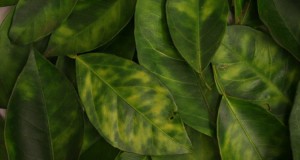Florida is the largest orange-producing state in the United States and the third largest orange producer in the world, but the Florida citrus industry and its position in the global citrus market are being jeopardized by a bacterial disease known as citrus greening or Huanglongbing (HLB). HLB hurts the vascular systems of citrus trees and prevents them from absorbing nutrients. The disease reduces yields, leads to smaller, lower-quality fruit, kills trees, and increases farmers’ production costs. First found in Florida in 2005, HLB has spread rapidly across the state.
As of January 2016, there is neither a cure nor an economically viable option for managing HLB-infected trees. Since HLB was first found in 2005, orange acreage and yield in Florida have decreased by 26% and 42%, respectively. Orange production dropped from 242 million to 104.6 million boxes in 2014. Even though the industry acknowledges that HLB has reached epidemic proportions across the state, estimates of the level of infection and its impact on citrus operations are scarce. This 4-page article written by Ariel Singerman and Pilar Useche and published by the Food and Resource Economics Department presents the first growers’-survey-based estimates of both the level of HLB infection in Florida and the impact of HLB on citrus operations in Florida.
http://edis.ifas.ufl.edu/fe983
